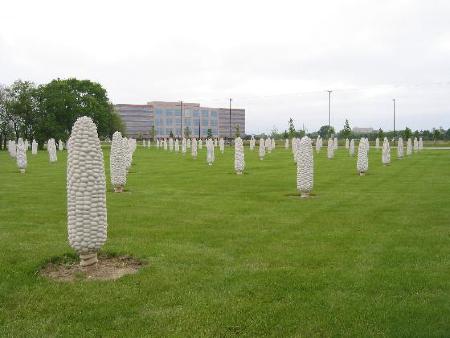- The Leveraging Agriculture: what engaged participants? And the IFPRI contribution. What’s the intersection of those two sets, I wonder.
- Productive means susceptible. Except when it doesn’t. I’m in that kind of mood today.
- The deep origins of Vitis.
Evaluating maize for nutritional quality
You think they’re discussing this sort of thing at the “Leveraging Agriculture for Improving Nutrition and Health” conference? You think they’re also discussing dietary diversity?
The Concrete Corn Field

This picture contains more layers of meaning than you can possibly imagine. Nicola Twilley unpacks some of them at GOOD. Has she left any out?
Documentary on rice and climate change goes online
It’s a bit apocalyptic in tone, but it’s always good to see a genebank featured (starting at about 7:00 minutes in) in a popular documentary, in this case IRRI’s. But there’s much more, so watch the whole thing. Well done, Ruaraidh. And thanks, History Channel.
Nibbles: Barley, Fellowship, Supplier, Malnutrition, choices, Rice and climate change
- “[A]n ancient barley grain”. Just the one. One only. From Neolithic England.
- Crawford Fund Fellowship “for an agricultural scientist from a selected group of developing countries whose work has shown significant potential”.
- New World Seeds & Tubers, a supplier thereof.
- Alternative remedies for late potato blight.
- Mild underweight a better indicator of childhood malnutrition than severe. Press release and paper.
- “Food or the environment? Mixed signals confuse farmers.” There has to be a choice?
- Indonesia sorts out its rice-adapted-to-climate-change problem.
